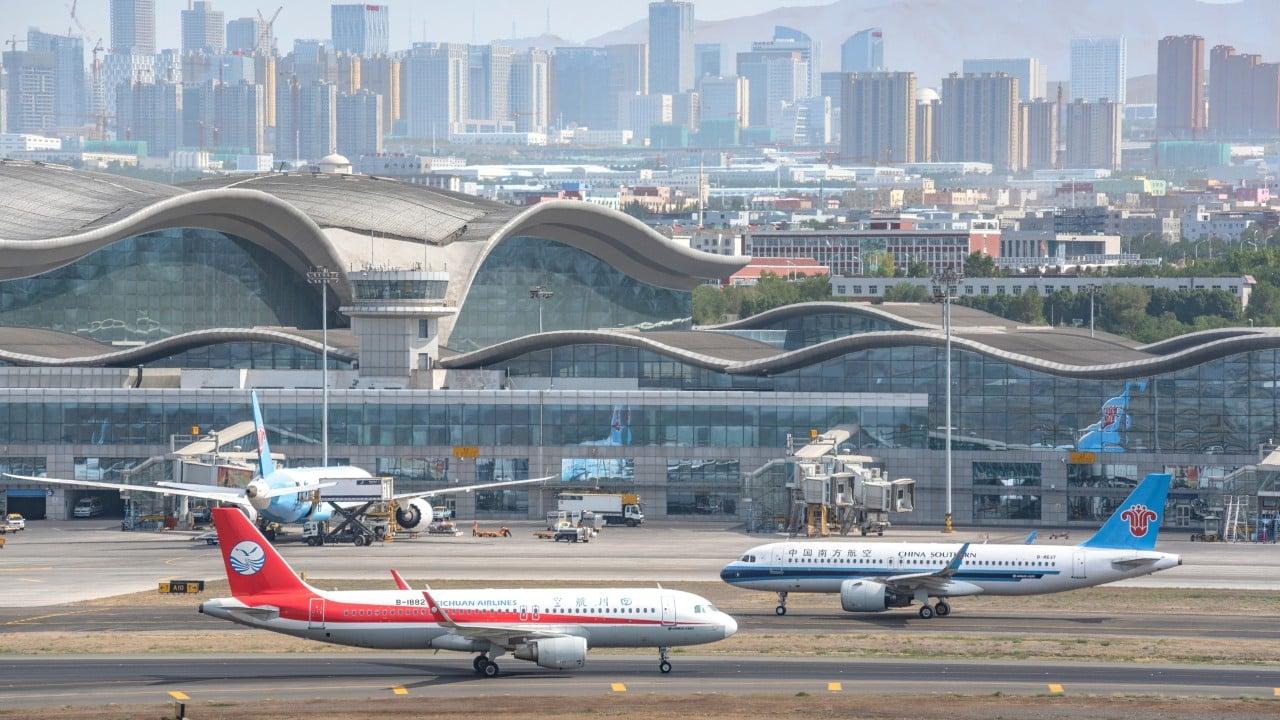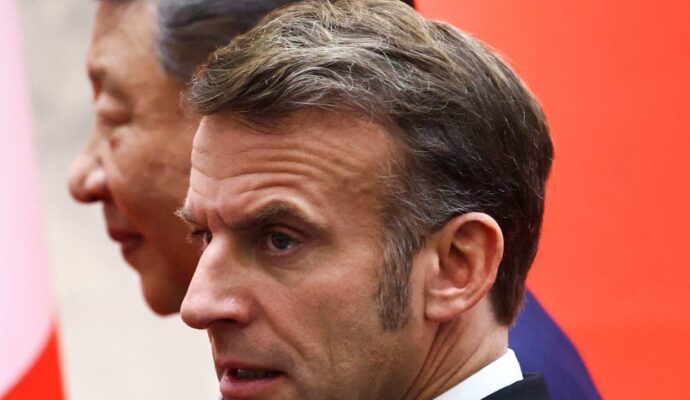
“Urumqi is the biggest commercial and financial hub in northwest China and the core city of the Belt and Road Initiative near Central Asia. Foreign investors can take advantage of Hong Kong as a transit to Urumqi directly instead of having layovers in other Chinese cities,” he said.
The belt and road scheme is an ambitious plan by central authorities to connect numerous economies in Asia, Europe and Africa into a trading network centred around China. The initiative marked its 10th anniversary this year.
Experts have said the new route between Hong Kong and Urumqi could help attract international businesses to the Xinjiang region. Photo: Xinhua
Under the new service, an inbound flight will depart from Urumqi Diwopu International Airport at 10.15am for landing in Hong Kong at 3.35pm.
Meanwhile, the flight from Hong Kong International Airport will depart at 4.35pm and arrive in Urumqi at 10.20pm.
However, Law said it was unclear how much extra business the new service would bring Hong Kong as an international aviation hub since only one pair of flights would run between the two cities each week.
“As passenger demand grows, I believe the company will operate more frequently and other airlines may join operating direct flights connecting the two cities,” he said.
Current routes between Hong Kong and Urumqi require travellers to stop off in mainland cities such as Chengdu, Shanghai, Nanjing and Beijing, with flights operated by Cathay Pacific Airways, Sichuan Airlines, Shanghai Airlines and China Eastern Airlines taking between eight and 11 hours.
Urumqi Air earlier this week said the new direct flight would make travel between the two destinations easier, helping to boost the business environment in Xinjiang and connect it to the Greater Bay Area, Beijing’s ambitious scheme to integrate Hong Kong, Macau and nine cities in Guangdong province into an economic powerhouse.
Businesses operating in Xinjiang have previously attracted scrutiny from the United States, with Hong Kong-based Esquel Group coming under fire in 2020 for its investments there.
The leading garment manufacturer and supplier for renowned brands such as Tommy Hilfiger, Patagonia, and Nike in 2021 filed a lawsuit against the US Department of Commerce for placing its Xinjiang subsidiary on an entity list over allegations of using forced labour.
Ma Xingrui, Xinjiang’s Communist Party secretary. Photo: Edward Wong
Professor Zhu Yongbiao, a scholar at Lanzhou University who specialises in politics and international relations focusing on Central Asia, said the new route was a clear signal that Xinjiang was making itself more accessible to the world with greater ease and confidence, marking a significant change in attitudes.
“This shows that the governing philosophy in Xinjiang, including that of Ma and Beijing, is also changing, becoming more confident and relaxed in dealing with various issues,” Zhu said, referring to Ma Xingrui, who took over from Chen Quanguo as Xinjiang’s Communist Party secretary in 2021.
Since the change in leadership, Ma has advocated for initiatives that aim to modernise the region’s supply chains and enhance its international business landscape.
“Xinjiang, the central region of the Belt and Road Initiative, has long struggled to maximise its external openness potential due to factors like the pandemic, Western sanctions or interference and past counterterrorism efforts,” Zhu said.
“But things have changed now. Xinjiang is motivated to improve its relations with international regions, including Hong Kong, and to better utilise domestic and international markets and resources.”
“In the future, Xinjiang will implement more measures to strengthen exchanges with the outside world, enhance economic ties, and attract foreign direct investment, including from Hong Kong and other overseas regions.”
Last July, Chinese President Xi Jinping made his second-ever trip to Xinjiang, saying initiatives there had yielded fruitful results and stressing the location had shifted from a remote corner to a core hub.
Legislator Frankie Yick, who represents Hong Kong’s transport sector. Photo: Edmond So
Professor Barry Sautman, of the Hong Kong University of Science and Technology, said the visible link between the city and Xinjiang meant China could emphasise it would work around Western-imposed sanctions on government entities in both locations.
“Hong Kong has traditionally been a place, especially for Western visitors, first to enter China and that is likely to again be the case in the post-pandemic era,” he said.
“The Chinese government wants to smooth the process for foreigners to visit Xinjiang for economic and cultural experiences and to have them contribute to the region’s development and see for themselves.”
Legislator Frankie Yick Chi-ming, who represents the transport sector, welcomed the move and said more direct flights between Hong Kong and various locations would only help to solidify the city’s position as an international aviation hub.
“Connectivity is everything. Destination availability, flight frequency and airport efficiency can help attract people and foster cultural exchanges, as well as return the tourism sector to normality after three years of pandemic-related restrictions,” he said.


